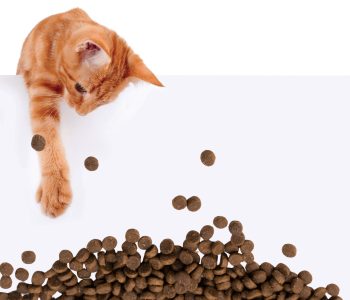Factors that impact Palatability in Feline Diets
A well-balanced diet must provide all essential nutrients, and it should also include flavors that stimulate intake. Palatability is crucial because even if a diet is complete and well-balanced, it falls short of promoting optimal intake without appealing taste.
The palatability of the diet plays an important role in optimizing energy and nutrient intake in domestic cats by ensuring an adequate food intake.
- The palatability of any cat food is closely linked to its attributes of taste, odor, shape, texture, and taste sensation (Small and Prescott 2005).
The significance of odor perception is substantial in cats and plays a crucial role in their food selection and consumption. Cats rely on scent to identify foods that meet their nutritional requirements and to identify potentially toxic substances.
Cats are initially drawn to food by its odor. Thus, flavor enhancers impact the palatability of foods in two different ways:
Though cats rely on their sense of taste to evaluate food nutrients, this sensory ability also serves as a protective mechanism against the consumption of toxic substances, harmful ingredients, or indigestible components.
- Nonetheless, cats possess a relatively limited number of taste buds. Consequently, they depend on supplementary senses to discern the flavor of food. Among these alternate senses, the sense of smell is particularly notable, being 14 times more potent than in humans (Padodara and Jacob 2014).
Furthermore, it’s recognized that the physiological condition of hunger influences cats’ eating behavior (Peachey and Harper 2002).
Another factor that influences food acceptability is age, as advancing age results in a significant decrease in olfactory receptors, thereby reducing the sense of smell. Moreover, age has also been associated with a concurrent loss of taste (Boyce and Shone 2006).
Another widely acknowledged fact is that the palatability of foods increases proportionally with higher fat content.
A variety of compounds can be integrated into cat foods, serving nutritional, functional, and enhancement of palatability purposes.
| Spray-dried animal plasma is commonly incorporated, particularly in canned pet foods, owing to its notable ability to retain water, resulting in enhanced gelation and emulsification properties (Rodríguez et al., 2016). Moreover, there have been indications of heightened palatability in diets containing spray-dried animal plasma as opposed to those containing wheat gluten (Polo et al., 2005). |
Dry yeast, a byproduct of the ethanol industry, and brewer’s yeast are also utilized as flavor enhancers in the pet food industry.
- The enhanced palatability resulting from the inclusion of yeast is linked to its elevated content of glutamic acid, imparting the umami or savory meat-like fragrance (Nagodawithana, 1992).
However, the physiological mechanism underlying this relationship remains unclear.
| In summary, the utilization of behavioral responses during food intake in conjunction with preference and intake data can be advantageous in providing more comprehensive insights into the determination of palatability in pet food. Additionally, the development of novel flavor enhancers and palatability boosters may improve the acceptability of certain ingredients that are still rejected by cats. |
Bibliographical references available upon request.
Source: This article was originally published as a content in portuguese in nutriNews Brasil 2023
